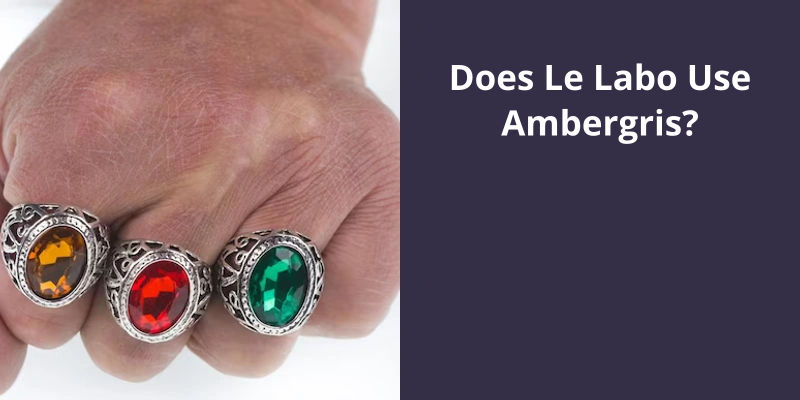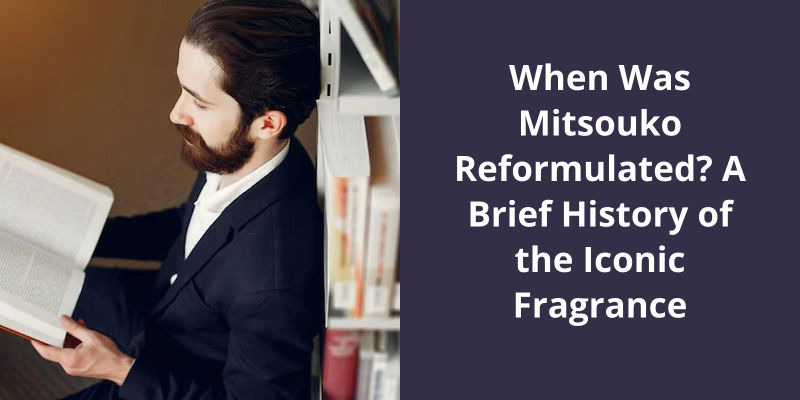Le Labo, a well-known fragrance brand, does not publicly confirm the use of ambergris in their perfumes. Many high-end perfume brands have transitioned away from using ambergris due to ethical and sustainability considerations. Instead, they use synthetic alternatives like Ambroxan which mimics the musky, sweet, and marine notes of ambergris. However, since the exact formulation of Le Labo perfumes isn’t disclosed, it’s not clear whether they use ambergris, a synthetic substitute, or a combination of both in their fragrances.

Do Perfumes Still Use Real Ambergris?
Perfumery has a long history of utilizing natural ingredients, and ambergris is among the most coveted. However, with increased regulations and ethical concerns, the use of real ambergris in perfumes has been significantly reduced.
While synthetic ambergris will never completely replicate the nuances and complexity of the natural version, significant progress has been made in the lab to mimic it’s aroma.
One notable advantage of synthetic ambergris is that it eliminates ethical concerns associated with using ingredients derived from endangered or protected species. Additionally, synthetic alternatives address sustainability concerns, as using real ambergris contributes to the demand for capturing and killing sperm whales.
However, purists argue that nothing truly compares to the essence of genuine ambergris. Authentic ambergris possesses a depth and complexity that can’t be replicated entirely in the lab. It’s subtle variations and aging process impart unique qualities that synthetic alternatives may struggle to imitate.
The History and Cultural Significance of Ambergris in Perfumery
Ambergris, a rare substance derived from the digestive system of sperm whales, has played a significant role in the history of perfumery. Renowned for it’s unique scent, which blends marine and earthy notes, ambergris has been prized for centuries for it’s ability to enhance and fix fragrances.
While some perfume houses, such as Le Labo, may utilize synthetic alternatives to ambergris due to ethical concerns surrounding it’s origin, ambergris continues to hold a revered place in the world of perfumery.
The use of ambergris dates back to ancient civilizations, where it was believed to possess mystical properties and was even considered an aphrodisiac. It’s rarity and complex aroma make it highly sought after by perfumers, who often use it as a base note in fragrance compositions to provide depth and longevity.
However, due to conservation efforts and restrictions on whaling, the availability of natural ambergris has dwindled. As a result, modern perfumers have turned to synthetic substitutes that mimic the scent of ambergris without the need for animal extraction.
Despite shifting preferences and ethical concerns, the history and cultural significance of ambergris in the realm of perfumery remain undeniable, as it continues to inspire and influence fragrance creations to this day.
Scientists and perfumers worked tirelessly to replicate the distinctive scent and luxurious essence of this natural ingredient, which is derived from the digestive system of sperm whales. However, it was not until the 1950s that Chanel successfully introduced a fragrance with an enticing touch of ambergris. This innovation marked a significant milestone in the history of perfume, forever changing the way we experience and appreciate fragrance.
Which Chanel Perfume Has Ambergris?
During this time, Chanel was at the forefront of the perfume industry, with it’s iconic Chanel No. 5 becoming a worldwide sensation. However, Chanel No. 5 doesn’t contain ambergris. Despite it’s luxurious and exotic reputation, the perfume doesn’t rely on this rare ingredient. Instead, it’s crafted using a rich blend of floral and aldehydic notes, creating a timeless and elegant scent.
Ambergris, a substance produced in the intestines of sperm whales, has long been used in perfumery due to it’s unique odor-enhancing properties. It’s a warm, musky scent that adds depth and longevity to fragrances, making it highly sought after by perfumers. However, due to the decline in whale populations and the ethical concerns surrounding it’s sourcing, many perfume brands have moved away from using ambergris.
Instead of relying on animal-derived ingredients like ambergris, Chanel has explored the use of synthetic substitutes and natural ingredients to achieve their desired olfactory profiles. Their perfumes are carefully crafted using a combination of high-quality raw materials, including flowers, fruits, woods, and spices, to create complex and captivating fragrances.
Chanels dedication to ethical and sustainable practices extends beyond their choice of ingredients. They’ve made significant strides in reducing their environmental footprint and promoting transparency in their supply chain. This commitment to responsible perfume production sets them apart in the industry and ensures that their fragrances continue to captivate and inspire consumers worldwide.
The Impact of Synthetic Substitutes in Perfumery: How Have Synthetic Ingredients Replaced Animal-Derived Substances Like Ambergris?
- Introduction to synthetic substitutes in perfumery
- History and evolution of synthetic ingredients in fragrance production
- Understanding ambergris and it’s traditional use in perfumery
- The reasons behind the shift towards synthetic substitutes
- Advantages and benefits of using synthetic ingredients
- Ethical considerations and sustainability in perfumery
- Exploring popular synthetic substitutes for ambergris
- Comparing the characteristics and olfactory profiles of synthetic substitutes
- Consumer perception and acceptance of synthetic fragrances
- The future of synthetic substitutes in the world of perfumery
Source: In Search of Ambergris, a Highly Prized Slurry of Squid Beaks …
Ambergris, a highly coveted ingredient in the perfume industry, has been used by various fragrance brands to add a unique and luxurious touch to their creations. While it’s prominently found in classic scents like Mitsouko by Guerlain, contemporary perfumes like Ambre Nuit by Dior and Ambre Sultan by Serge Lutens also incorporate this rare substance. The inclusion of natural ambergris enhances these fragrances, adding an intriguing and animalic note that’s both timeless and captivating.
What Perfume Brands Use Ambergris?
Ambergris, also known as “floating gold,” is a prized ingredient in the world of perfumery due to it’s unique scent characteristics. While many perfume brands don’t openly disclose the use of ambergris in their fragrances, some notable names in the industry have been known to incorporate this precious substance into their creations.
One such brand that utilizes ambergris in their perfumes is Le Labo. Known for their minimalistic yet luxurious approach to fragrance, Le Labo crafts scents that are often complex and sophisticated. While not all of their perfumes contain ambergris, some of their creations, like their iconic fragrance Santal 33, are said to contain this sought-after ingredient.
Similarly, distinguished fragrance houses such as Guerlain and Dior have been known to incorporate natural ambergris into their perfumes. Mitsouko by Guerlain, a timeless classic, is believed to contain a touch of ambergris, lending it a warm and sensual quality. Diors Ambre Nuit is another exquisite fragrance that showcases the beauty of ambergris, evoking a blend of rich amber and delicate florals.
Serge Lutens, a renowned perfumer and creator of niche fragrances, is also recognized for his use of ambergris in some of his creations. His perfume Ambre Sultan is celebrated for it’s opulent amber accords, which are enhanced by the presence of this sea-derived treasure.
This ensures sustainability and ethical practices within the industry, while still offering the allure of ambergris-like aromas.
While not an exhaustive list, these are just a few examples demonstrating the utilization of ambergris in perfumery. It’s inclusion in fragrances adds depth, warmth, and a touch of mystery, presenting perfumers with a unique and precious ingredient to captivate the senses.
The Process of Obtaining and Harvesting Ambergris in the Perfume Industry
Ambergris is a waxy substance produced in the digestive system of sperm whales. It’s highly valued in the perfume industry for it’s unique scent and fixative properties. The process of obtaining ambergris involves harvesting it from the ocean or finding it washed ashore. It’s a rare and precious material, often used as a base note in luxury fragrances. While Le Labo is known for using high-quality and natural ingredients in their perfumes, it’s unclear if they specifically use ambergris in their formulations.
Conclusion
This olfactory composition is further enhanced by Le Labo's signature touch, incorporating elements like woods, musks, and the exquisite touch of ambergris. The presence of ambergris adds a seductive and sensual undertone, elevating the overall experience of the perfume.





